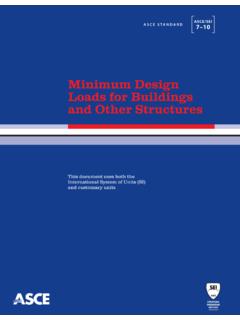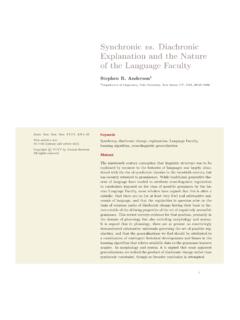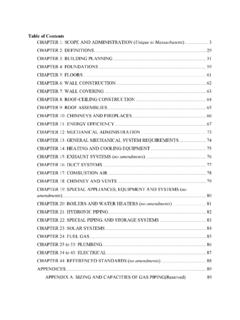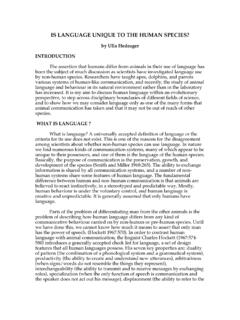Transcription of 10 ENGINEERING NOISE CONTROL - World Health …
1 10. ENGINEERING NOISE CONTROL . Professor Colin H. Hansen Dr Berenice Goelzer*. Department of Mechanical ENGINEERING World Health Organization University of Adelaide South Australia 5005. AUSTRALIA. INTRODUCTION. As with any occupational hazard, CONTROL technology should aim at reducing NOISE to acceptable levels by action on the work environment. Such action involves the implementation of any measure that will reduce NOISE being generated, and/or will reduce the NOISE transmission through the air or through the structure of the workplace. Such measures include modifications of the machinery, the workplace operations, and the layout of the workroom. In fact, the best approach for NOISE hazard CONTROL in the work environment, is to eliminate or reduce the hazard at its source of generation, either by direct action on the source or by its confinement.
2 Practical considerations must not be overlooked; it is often unfeasible to implement a global CONTROL program all at once. The most urgent problems have to be solved first; priorities have to be set up. In certain cases, the solution may be found in a combination of measures which by themselves would not be enough; for example, to achieve part of the required reduction through environmental measures and to complement them with personal measures ( wearing hearing protection for only 2-3 hours), bearing in mind that it is extremely difficult to make sure that hearing protection is properly fitted and properly worn. This chapter presents the principles of ENGINEERING CONTROL of NOISE , specific CONTROL measures and some examples.
3 Reading of chapter 1 is indispensable for the understanding of this chapter. Note that many of the specific NOISE CONTROL measures described are intended as a rough guide only. Further information on the subject can be found in ISO 11690 and in the specialised literature. Also suppliers of equipment and NOISE CONTROL hardware can often provide helpful NOISE CONTROL advice. NOISE CONTROL STRATEGIES (See ISO 11690). Prior to the selection and design of CONTROL measures, NOISE sources must be identified and the NOISE produced must be carefully evaluated. Procedures for taking NOISE measurements in the course of a NOISE survey are discussed in chapter 7. _____. *Present address: 26, ch. Colladon CH-1209 Geneva, Switzerland 246 ENGINEERING NOISE CONTROL To adequately define the NOISE problem and set a good basis for the CONTROL strategy, the following factors should be considered: type of NOISE NOISE levels and temporal pattern frequency distribution NOISE sources (location, power, directivity).
4 NOISE propagation pathways, through air or through structure room acoustics (reverberation). In addition, other factors have to be considered; for example, number of exposed workers, type of work, etc. If one or two workers are exposed, expensive ENGINEERING measures may not be the most adequate solution and other CONTROL options should be considered; for example, a combination of personal protection and limitation of exposure. The need for CONTROL or otherwise in a particular situation is determined by evaluating NOISE levels at noisy locations in a facility where personnel spend time. If the amount of time spent in noisy locations by individual workers is only a fraction of their working day, then local regulations may allow slightly higher NOISE levels to exist.
5 Where possible, NOISE levels should be evaluated at locations occupied by workers' ears. Normally the NOISE CONTROL program will be started using as a basis A-weighted immission or NOISE exposure levels for which the standard ISO 11690-1 recommends target values and the principles of NOISE CONTROL planning. A more precise way is to use immission and emission values in frequency bands as follows. The desired (least annoying) octave band frequency spectrum for which to aim at the location of the exposed worker is shown in Figure for an overall level of 90 dB(A). If the desired level after CONTROL is 85 dB(A), then the entire curve should be displaced downwards by 5 dB. The curve is used by determining the spectrum levels (see chapter 1) in octave bands and plotting the results on the graph to determine the required decibel reductions for each octave Figure Desired NOISE spectrum for an overall level of 90 dB(A).
6 ENGINEERING NOISE CONTROL 247. band. Clearly it will often be difficult to achieve the desired NOISE spectrum, but at least it provides a goal for which to aim. It should be noted that because of the way individual octave band levels are added logarithmically, an excess level in one octave band will not be compensated by a similar decrease in another band. The overall A-weighted sound level due to the combined contributions in each octave band is obtained by using the decibel addition procedure described in chapter 1. Any NOISE problem may be described in terms of a source, a transmission path and a receiver (in this context, a worker) and NOISE CONTROL may take the form of altering any one or all of these elements.
7 The NOISE source is where the vibratory mechanical energy originates, as a result of a physical phenomenon, such as mechanical shock, impacts, friction or turbulent airflow. With regard to the NOISE produced by a particular machine or process, experience strongly suggests that when CONTROL takes the form of understanding the NOISE -producing mechanism and changing it to produce a quieter process, as opposed to the use of a barrier for CONTROL of the transmission path, the unit cost per decibel reduction is of the order of one tenth of the latter cost. Clearly, the best controls are those implemented in the original design. It has also been found that when NOISE CONTROL is considered in the initial design of a new machine, advantages manifest themselves resulting in a better machine overall.
8 These unexpected advantages then provide the economic incentive for implementation, and NOISE CONTROL becomes an incidental benefit. Unfortunately, in most industries, occupational hygienists are seldom in the position of being able to make fundamental design changes to noisy equipment. They must often make do with what they are supplied, and learn to use effective "add-on" NOISE CONTROL technology, which generally involves either modification of the transmission path or the receiver, and sometimes the source. If NOISE cannot be controlled to an acceptable level at the source, attempts should then be made to CONTROL it at some point during its propagation path; that is, the path along which the sound energy from the source travels.
9 In fact, there may be a multiplicity of paths, both in air and in solid structures. The total path, which contains all possible avenues along which NOISE may reach the ear, has to be considered. As a last resort, or as a complement to the environmental measures, the NOISE CONTROL problem may be approached at the level of the receiver, in the context of this document, the exposed worker(s). In existing facilities, controls may be required in response to specific complaints from within the workplace, and excessive NOISE levels may be quantified by suitable measurements as described previously. In proposed new installations, possible complaints must be anticipated, and expected excessive NOISE levels must be estimated by some procedure.
10 As it is not possible to entirely eliminate unwanted NOISE , minimum acceptable levels of NOISE must be formulated and these levels constitute the criteria for acceptability (see chapter 4) which are generally established with reference to appropriate regulations in the workplace. In both existing and proposed new installations an important part of the process is to identify NOISE sources and to rank order them in terms of contributions to excessive NOISE . When the requirements for NOISE CONTROL have been quantified, and sources identified and ranked, it is possible to consider various options for CONTROL and finally to determine the cost effectiveness of the various options. As was mentioned earlier, the cost of enclosing a NOISE source is generally much greater than modifying the source or process producing the NOISE .
















